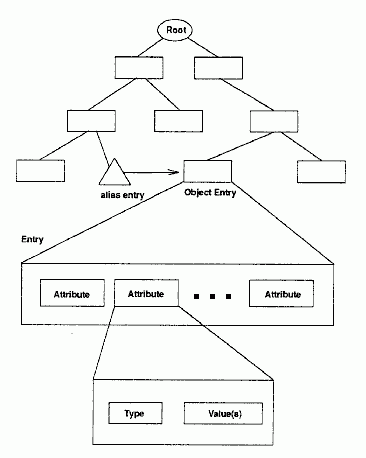
The directory contains information about objects. The standard defines an object very broadly as ''anything in some world, generally the world of telecommunications and information processing or some part thereof, which is identifiable (can be named).'' Some examples of objects include people, corporations, and application processes.
Each object known to the directory is represented by an entry. The set of all entries is called the Directory Information Base (DIB), which is a hierarchical tree. Each entry consists of a set of attributes representing specific information about the object. Each attribute, in turn, has a type and one or more values of that type. Attributes with more than one value are referred to as multivalued or recurring attributes.
The following figure shows the structure of the DIB.
The Structure of the DIB

The attributes that constitute a single entry can be of various types. For example, an entry for a person may contain that person's name, address, and phone number. If the person has a second telephone number, the attribute of type telephone number may have two values, one for each telephone number.
Object entries are composed of mandatory and optional attributes. Mandatory and optional attributes are discussed in The Object Class Table.